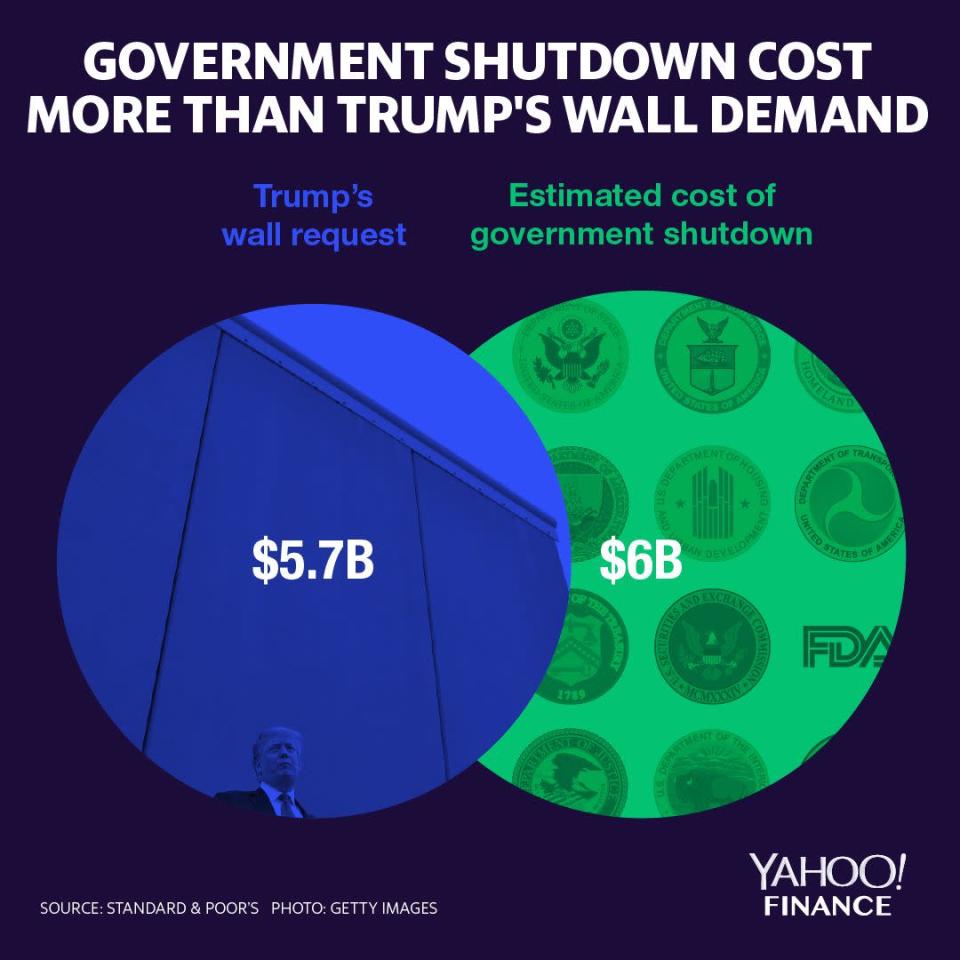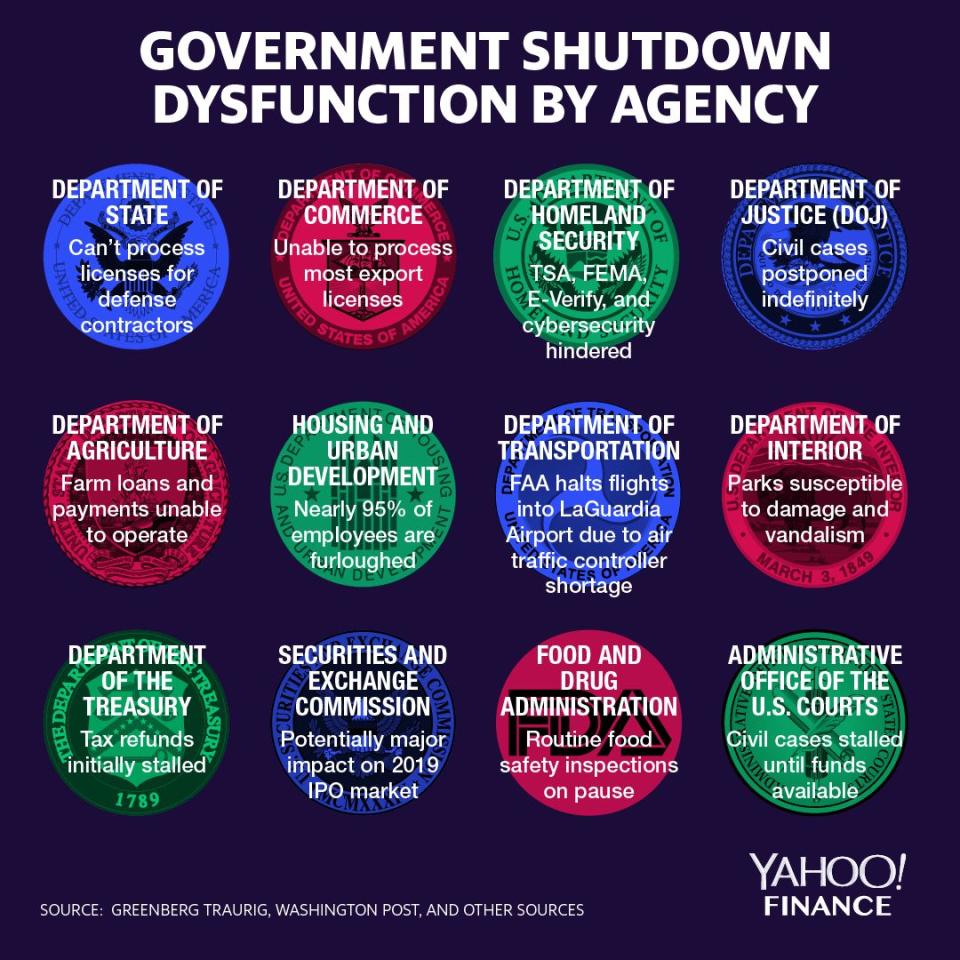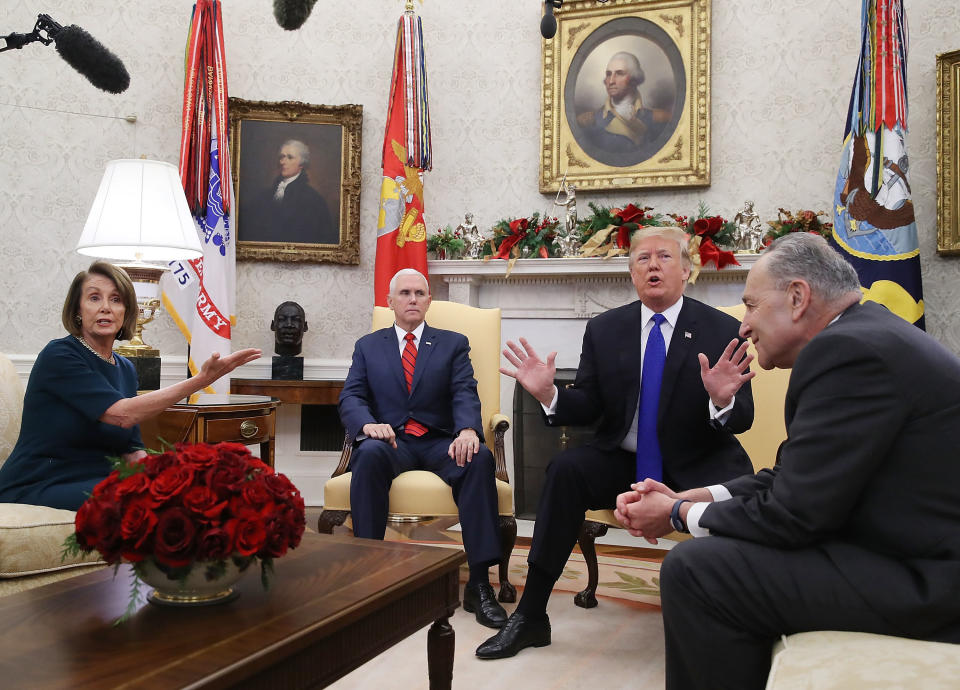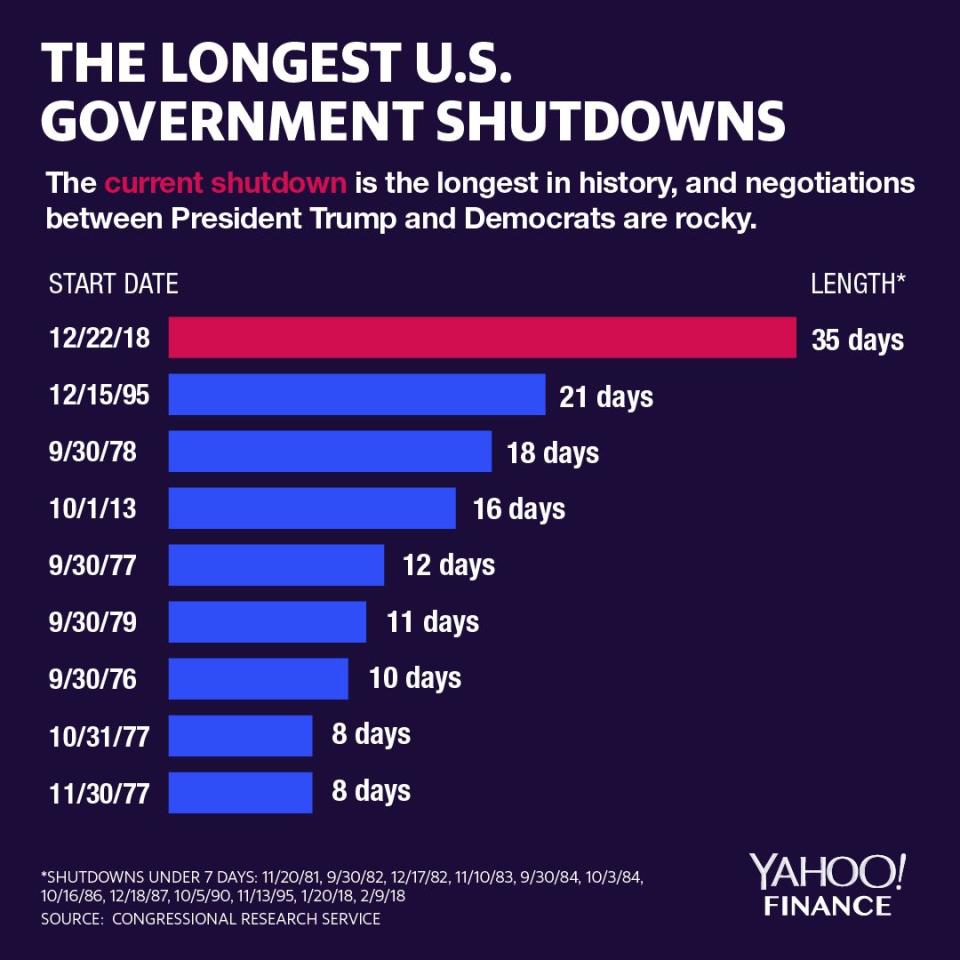Government shutdown cost U.S. more than Trump's wall demand
Update 1/28/19: The nonpartisan Congressional Budget Office reported that the shutdown cost about $11 billion, at least $3 billion being a permanent loss.
Lost productivity from furloughed workers and weakened economic activity during the 35-day partial government shutdown cost the U.S. economy at least $6 billion, according to a new analysis from S&P Global Ratings.
On Friday, after staff shortages caused disruptions at some of that nation’s busiest airports, President Donald Trump agreed to end the longest-ever shutdown without Congress fulfilling his demand of $5.7 billion for a border wall. Congress then passed seven stopgap spending bills to fund affected government agencies through February 15.
"Although this shutdown has ended, little agreement on Capitol Hill will likely weigh on business confidence and financial market sentiments," S&P said in a news release.

‘Direct impacts of the government shutdown will flow through GDP’
On January 22, The Committee for a Responsible Federal Budget (CRFB) estimated the cost of the shutdown to be $26 billion. That would be more than four times as much as Trump demanded for a border wall.
“Using the Council of Economic Advisers' estimate of a weekly loss of 0.13 percentage points of quarterly Gross Domestic Product (GDP) growth,” CRFB states, “we estimate that the four weeks of the government shutdown has cost the economy about $26 billion.”
The shutdown hit various government agencies, with furloughed workers and particularly contractors — who lost work and will not receive backpay — feeling the affects in their daily lives.

In a note late Friday night, Morgan Stanley analysts estimated that the shutdown would result in a .5 percentage point drag on first quarter GDP growth.
“The direct and indirect effect of the government shutdown have led us to review our 1Q growth estimate, and we now see 1Q GDP growth at 1.7%,” the analysts wrote. “That downgrade to our 1Q GDP forecast includes a 0.5pp drag from the shutdown.”
The analysts explained that “direct impacts of the government shutdown will flow through GDP via reduced hours worked by government employees, while indirect effects will be felt through impacts on government contracts, and the reduced consumption of government employees who have been without pay."

‘I am proud to shut down the government’
On December 11, Trump told told Senate Minority Leader Chuck Schumer (D-N.Y.) and House Minority Leader Nancy Pelosi (D-Calif.) that he would be “proud to shut down the government” and take full responsibility for it.
"I am proud to shut down the government for border security because the people of this country don't want criminals and people that have lots of problems and drugs pouring into our country," Trump said at a meeting with the Democratic leaders. "So I will take the mantle. I will be the one to shut it down. I'm not going to blame you for it."
The president added: "If we don't get what we want one way or the other ... I will shut down the government.”

This government shutdown cost U.S. more than previous ones
The U.S. government shutdown, along with Brexit and China, dominated conversation at the World Economic Forum in Davos, Switzerland from January 22 to January 25.
“This will solve itself. We will get back to normal. The problem is the longevity of this one,” Erdoes said in an interview with Yahoo Finance’s Editor-in-Chief Andy Serwer in Davos. “You can think about short term government delays as short term problems that then get rectified quite quickly.”
Erdoes continued: “The longer it goes, you're not going to make that up in the economy. You're not going to go to dinner twice next week, because you missed going out to dinner this week, because you didn't have the money to go out and afford that, or to buy, you know, an extra tank of gas, et cetera. So a lot of those things are expenditures that are not going to happen. That's going to have a weight on the GDP of the US.”
READ MORE:
Increasing delays at U.S. airports amid shutdown staff shortage
Pregnant federal contractor: My bills are piling up and there won't be back pay to help me
Follow Yahoo Finance on Twitter, Facebook, Instagram, Flipboard, LinkedIn, YouTube, and reddit.
